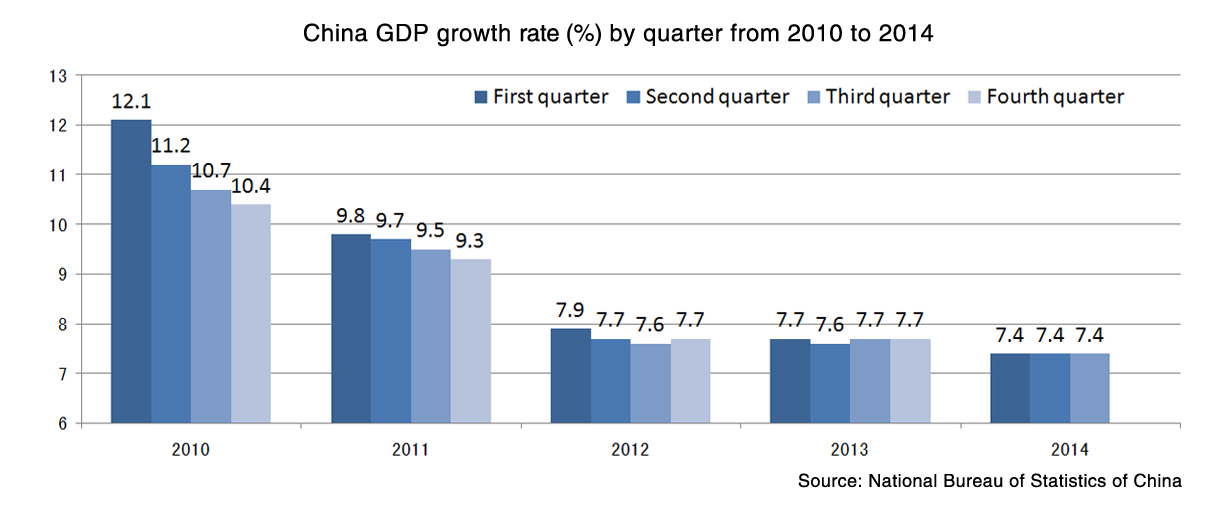Economics, sociology combine to seek sources of growth

Designed by Ren Jingyun/CSST

Philippe Mario Aghion (1956- ) is a French economist. He is the Robert C. Waggoner Professor of Economics at Harvard University. His main research work is on growth and contract theory. With Peter Howitt, he developed the so-called “Schumpeterian paradigm” and extended the paradigm in several directions.

Peter Wilkinson Howitt (1946- ) is a Canadian economist. He is the Lyn Crost Professor of Social Sciences at Brown University. Howitt has been a Fellow of Royal Society of Canada since 1992. He served as president of the Canadian Economics Association from 1993–1994. He co-wrote a book with Aghion titled Endogenous Growth Theory.
The sustained growth that China has seen since the reform and opening up has often been hailed as an “economic miracle,” but recently its annual growth slowed significantly, dropping to 7.4 percent in the first half of 2014.
China’s leaders are embracing a new economic paradigm that they refer to as the “new normal,” which is characterized by relatively slower growth and sustainability. The key point of current research is how China, the largest developing country in the world, can avoid the middle-income trap and make another miracle. It is evident that exploring new ways to invigorate the economy within the context of the “new normal” has become a focus of Chinese economic development.
Economic structure
When long-term sources of economic growth are considered, the total factor productivity (TFP) element of the economics of growth is worthy of particular attention. According to new theories of growth, sustainable growth should originate from an increase of TFP, which includes two approaches: improving efficiency and technological innovation. The former stresses the optimization of resource allocation despite the constraints of available technology and resources, while the latter aims to expand technological frontiers in production.
To change the growth model from one driven by investment to an innovation-driven model, it is necessary to identify the factors that influence the efficiency of resource allocation and technological innovation. Structure is the crux of the matter. It should be noted that the word “structure” here refers to industrial configurations at the macroscopic and microscopic level within the economic structure and spatial agglomeration as well as social stratification, which has an effect on long-term growth potential.
Previous studies on economic growth paid more attention to achieving balanced growth within the overall economy. By comparison, developmental economics focuses more on the differences in economic structure, which have been included into the analytical framework of growth. Philippe Aghion and Peter Howitt, representative figures in the economics of growth, pointed out that in the past 20 years, developmental economists had reasonable doubts about the growth model based on total quantity. They contend that attention should be paid to the differences in structure in order to better understand economic growth in terms of development.
At the micro level, some scholars find that some enterprises in developing countries also have the most advanced production technology. The theory of technology diffusion alone fails to account for the differences between countries in terms of TFP. And the main reason may be that resources are improperly distributed among different enterprises. At present, with micro-data of enterprises being more accessible, research on the relationship between distorted resource allocation and TFP has become a hot topic in growth studies.
At the macro level, Hollis Burnley Chenery and other economists emphasize structural transformations in the process of economic growth. From a static perspective, overall economic productivity undoubtedly varies according to different industrial structures. Furthermore, it can been seen from a dynamic perspective that the pace of technological progress varies greatly in different industrial sectors, and technological innovation also includes multiple types that have different effects and impacts, such as general and targeted techniques.
As a consequence, overall technological progress is closely related to the industrial structure and development policies adopted for targeted industries. Moreover, with the revival of regional and urban economics and the rise of new economic geography, the factor of space, once neglected by economists, has received attention again. The influence of agglomeration on efficiency and innovation has been included into the theoretical research on growth. Technological progress and industrial restructuring in modern economic development is inseparable from spatial agglomeration of economic activities.
Social structure
In addition to economic structure, attention should be also paid to the influence of social structure. In fact, economic development includes economic growth and social development. Classical studies on economic development in history, such as those of Karl Marx and Max Weber, all explained the relationship between economy and society. Ultimately, economics and sociology became independent disciplines, but recently interdisciplinary research has begun to examine economic problems from a sociological perspective once again.
When viewed in terms of economic structure, social structure has multiple meanings. In a broad sense, social structure contains economic structure. In a narrow sense, at the core of social structure is social stratification. A focus of most sociologists, social stratification as well as social mobility constitutes key factors that can influence the sources of long-term growth.
In sociology, research on social stratification and mobility focuses on justice and equality. Recently, however, importance has been attached to the relations between social stratification, social mobility and economic growth. As Chinese economist Cai Hongbin noted, social mobility is the core of long-term growth. Philippe Aghion also stated the importance of social mobility to China’s economic transition and development in the future. Moreover, as Ronald Inglehart, a political scientist from the University of Michigan, argues, social stratification has a direct influence on mainstream cultural values, which have a fundamental impact on economic growth. Thus, it can be concluded that social stratification and mobility can exert fundamental influence on long-term growth.
Combination of two structures
In a word, to explore the sources of China’s economic growth in its current stage of development, it is important to take into full account differences in terms of individuals, enterprises, space in economy and society while paying attention to economic and social structure and examining the influence of structural factors on production efficiency and technological innovation.
At the micro level of economic structure, it’s essential to uncover the key factors that lead to distorted resource allocation among enterprises. At the macro level, it is necessary to research the synergy among industrial restructuring, upgrading and spatial agglomeration.
Urban development is the embodiment of the evolution of industrial restructuring and spatial agglomeration, and the rise of metropolitan areas or urban agglomerations is a reflection of such evolution on a broader scale. For this reason, cities and urban agglomerations are playing a more prominent role in economic development in modern times.
Therefore, research on industrial restructuring and spatial agglomeration should be combined within the same analytical framework of growth. Also, efforts should be made to figure out the influence and effect of these factors, such as industrial correlation and clustering, diversification as well as specialization of urban industry and urban systems on TFP and ultimately on economic growth. At present, in the normative research in this field, either theoretical or empirical analysis has seldom been conducted and still needs to be strengthened.
In terms of social structure, social stratification and mobility exert a fundamental influence on economic growth through the definition of cultural values, the distribution of human resources and the enhancement of human capital. It is a long-term strategy to guide the formation of social stratification in such a way that it encourages innovation, enlarges the creative class and achieves equality in education in order to realize sustainable growth. Furthermore, social mobility should be improved to develop people with potential into excellent professionals and provide a talent pool that spurs innovation and creation.
In addition, attention should be paid to the synergy between industrial restructuring and social stratification evolution. Meanwhile, it is vital to analyze the compatibility and coordination of development policies in this respect. By comparison, there has been a bigger shortage of research on the relations between social stratification, mobility and economic growth so far, and it is urgent to make more efforts in this area of research.
Shao Yihang is from the School of Economics and Liu Ya’nan is from the Research Center for Economics and Culture at Xiamen University.

 PRINT
PRINT CLOSE
CLOSE